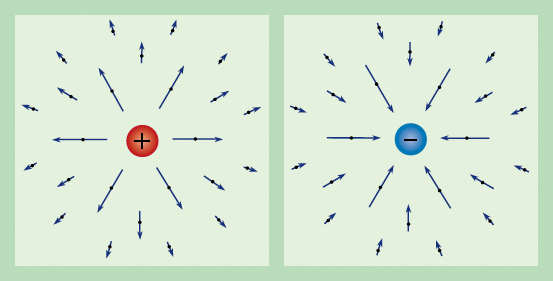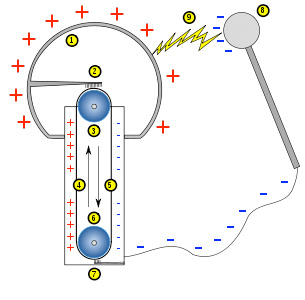Just as magnets create a magnetic field, electrically-charged objects create electric fields. Below are drawn examples of electric fields between a positive charge (blue +) and negative charge (yellow -) and between two positive charges.

Students and scientists tend to draw the electric field for positive charges as arrows pointing away from the charge and for negative charges as arrows pointing towards the charge.

We can create electric fields ourselves by rubbing our feet on a carpet or by building a Van de Graff generator.
 Schematic view of a classical Van de Graaff-generator.
Schematic view of a classical Van de Graaff-generator.
1) hollow metal sphere
2) upper electrode
3) upper roller (metal)
4) side of the belt with positive charges
5) opposite side of the belt with negative charges
6) lower roller (for example an acrylic glass)
7) lower electrode (ground)
8) spherical device with negative charges, used to discharge the main sphere
9) spark produced by the difference of potentials
 The most common thing that interacts with an electric field is the electron, a subatomic particle that carries a negative charge.
The most common thing that interacts with an electric field is the electron, a subatomic particle that carries a negative charge.
- Most of our visible evidence of the electric force is from streaks of electrons moving, like the spark when we get shocked by a static electricity discharge, or lightning between the clouds and the Earth. Lightning clearly shows us that the electromagnetic force can be very powerful!
When an object that produces a magnetic or electric field is moved, we find that it also produces a second field; that is, if we move our magnet, an electric field is produced in addition to the magnetic field, and if we moved an electrically-charged object, a magnetic field is produced in addition to the electric field.
